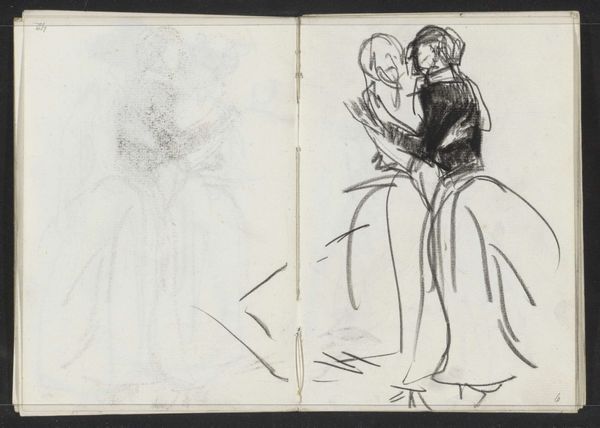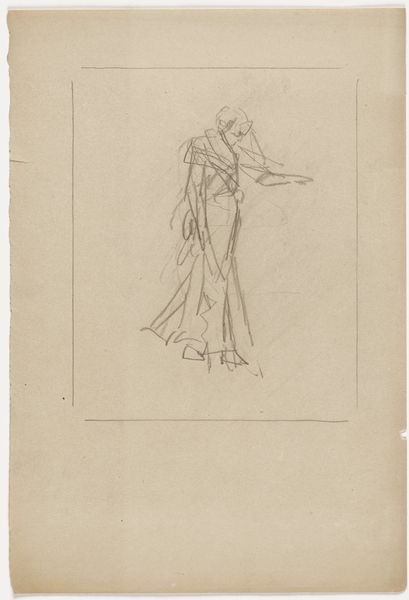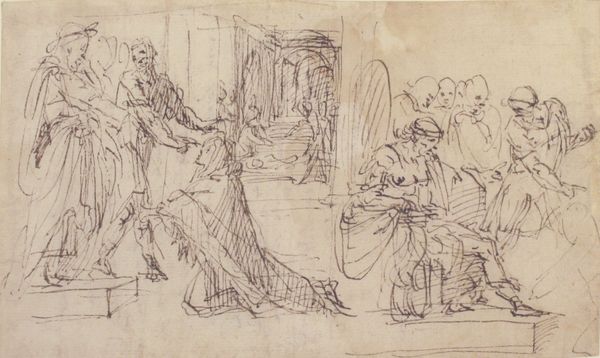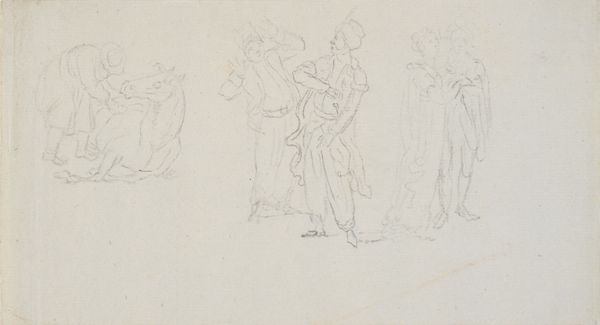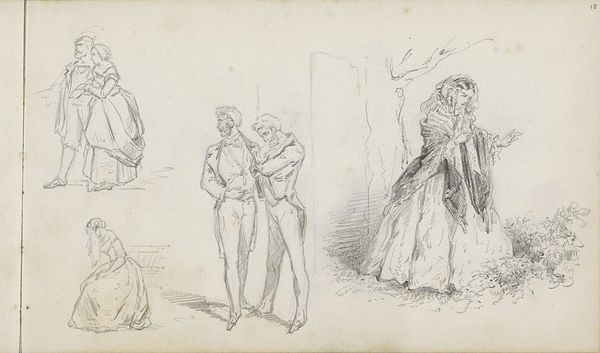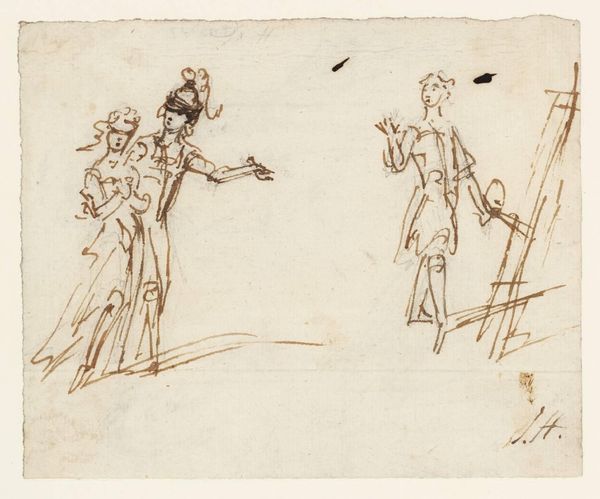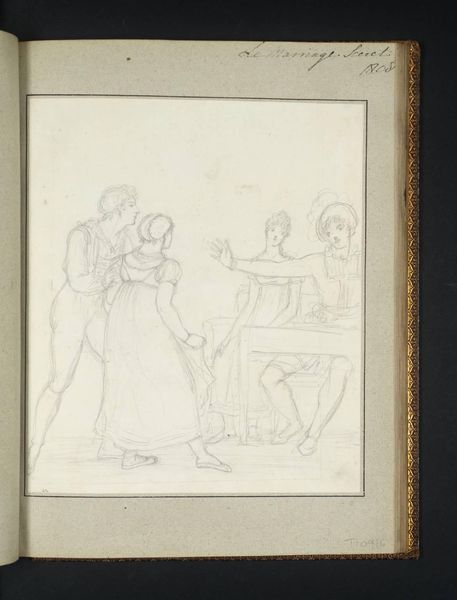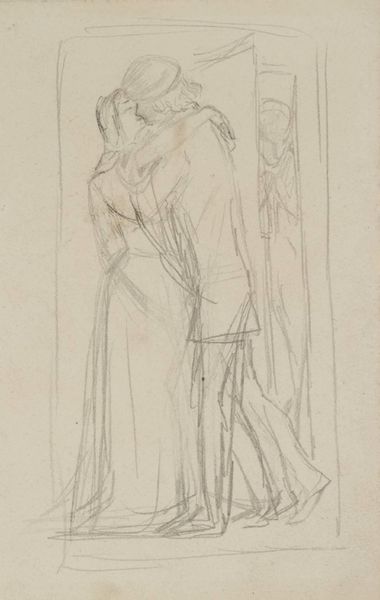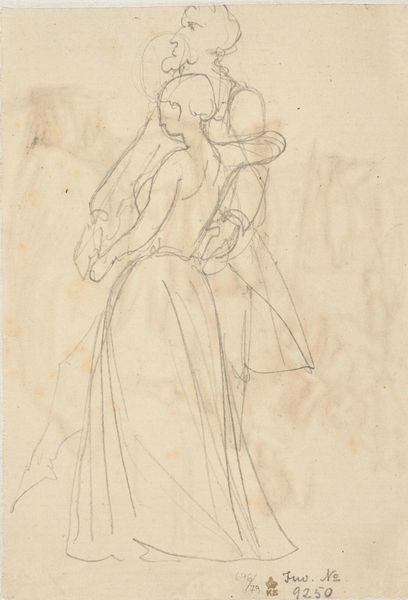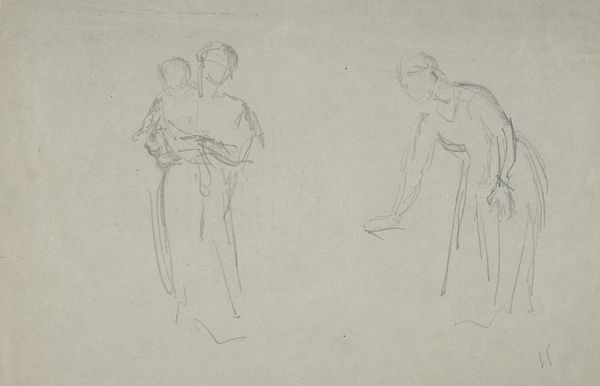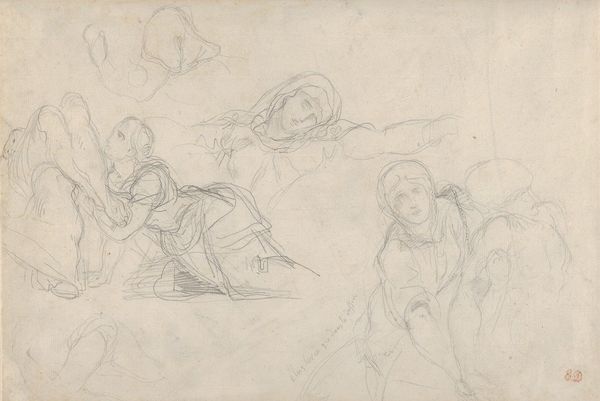
Copyright: Rijks Museum: Open Domain
Curator: Before us is "Studieblad met vrouwen en honden," or "Study Sheet with Women and Dogs," by Isaac Israels. Dating from somewhere between 1875 and 1934, it is a pencil drawing currently held in the Rijksmuseum. Editor: My first impression is how light and fleeting it feels. Like catching a glimpse of something rather than a fully realized scene. The figures seem caught in motion. Curator: Israels, closely linked to Dutch Impressionism, captures fleeting moments in modern life, and that comes through so clearly here. Note how he rapidly sketched these women and dogs, testing how to capture them and using an almost shorthand approach. It is as if we’ve been granted a peek inside his mind. Editor: I find the seemingly mundane nature of the subject matter interesting. Fashionable women out for a stroll. I wonder if it is offering any commentary on the social lives of women during that time. The dogs, particularly, feel almost like props here, adding to a scene of leisure and privilege. Curator: Symbolically, dogs can represent loyalty and companionship. Their presence alongside the women suggests a particular social circle. Moreover, the seemingly aimless character of the depiction connects with flâneur culture—that is, aimlessly wandering through urban environments—a theme beloved by the Impressionists. Editor: But beyond social observation, I wonder about the gaze at play here. Who are these women? Are they aware of being watched? It is easy to see these sketches in the historical context of the objectification of women, and this kind of candid drawing can feed into such a dynamic, showing how they are observed and interpreted rather than seeing themselves on their own terms. Curator: That tension is very revealing. Israels offers a fragmented view of society, where the female figure emerges from everyday life yet remains detached and somewhat idealized, if you consider that it is "just a sketch". And although sketchy and perhaps ‘unfinished’, such snapshots were becoming a defining aesthetic in European art at the time. Editor: Yes, and viewing it with those ideas of candid observation, a question comes into play whether we as modern viewers are replicating those unequal power dynamics by viewing such art in our contemporary museum setting. Curator: I hadn’t thought of that, and that definitely offers food for thought. Editor: Exactly. I see so much tension and power in a seemingly simple sketch. Curator: And I see the seeds of a new artistic vision emerging. Wonderful!
Comments
No comments
Be the first to comment and join the conversation on the ultimate creative platform.
